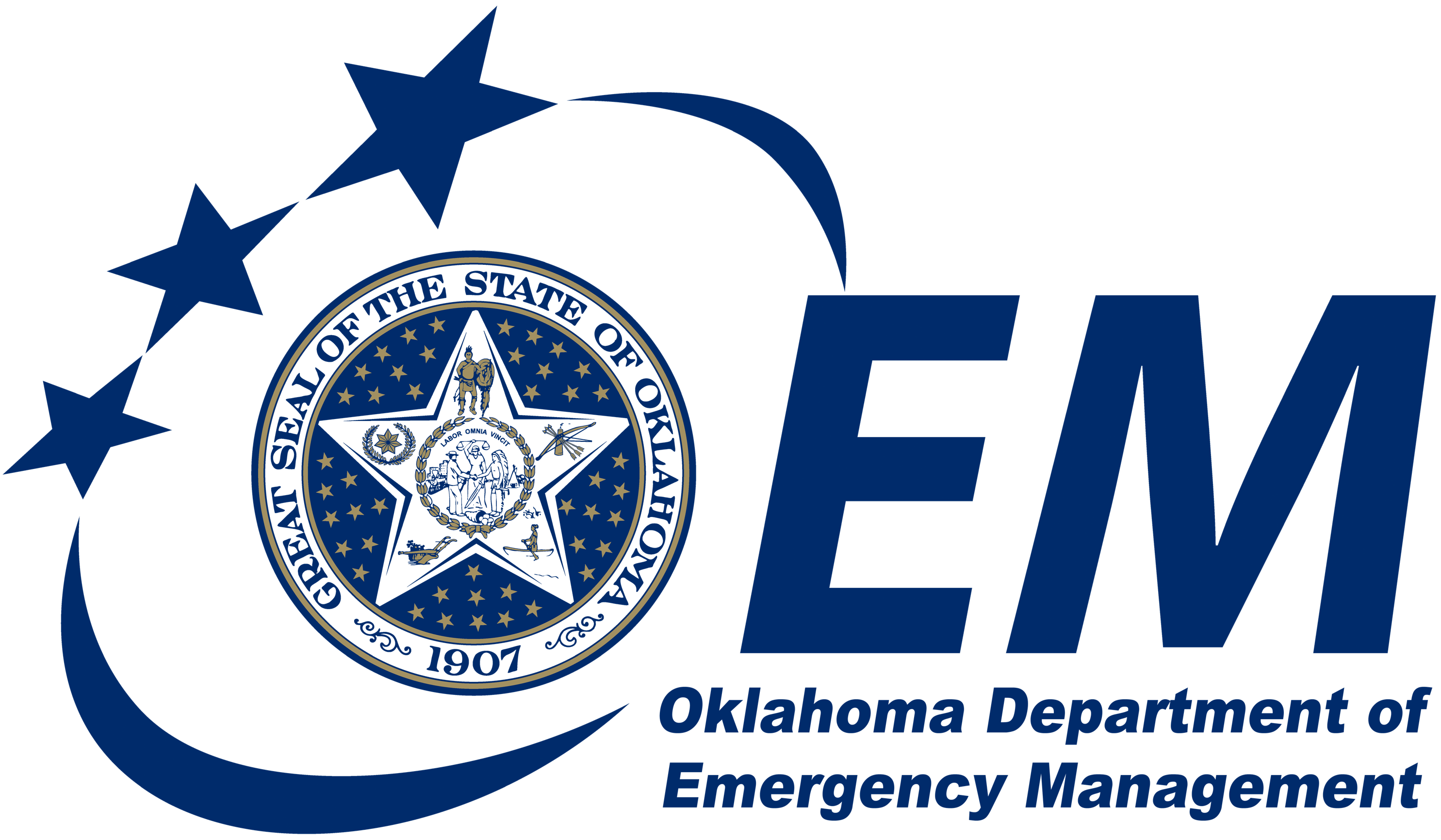Situation Update
Oklahoma Department of Emergency Management
Situation Update 3
December 25, 2009 – 3:45 p.m.
WINTER STORM CONTINUES TO IMPACT STATE
Oklahoma Remains Under a State of Emergency, as Declared by Gov. Brad Henry.
The Governor, along with state emergency management, public safety and transportation officials, continues to discourage all travel. In some areas, if motorists get stranded there may be a delay before assistance can reach them.
The State of Emergency marks a first step toward seeking federal assistance, should it be necessary. Additionally, the executive order allows state agencies to make emergency purchases and acquisitions needed to expedite the delivery of resources to local jurisdictions.
Officials with the Oklahoma Department of Emergency Management (OEM) remain in contact with emergency managers in the affected areas.
WEATHER CONDITIONS
An historic winter storm has left Oklahoma and in its wake heavy snow covers the ground. Totals from the National Weather Service showed 6 to 8 inches of snow across Oklahoma, with isolated amounts above 12 inches. In northwest Oklahoma 2 to 4 inches of snow fell. In southeast Oklahoma a dusting of up to 3 inches was reported. The snow will keep temperatures below freezing across a large part of Oklahoma today into Saturday. Temperatures may briefly rise above freezing on Sunday. Night time temperatures will be bitterly cold with readings in the single digits to mid teens across the state through Sunday night.
Another storm system is expected on Tuesday through Wednesday. A continued presence of freezing surface temperatures will likely result in additional snow or sleet for parts of Oklahoma.
INJURIES AND FATALITIES
The Oklahoma Highway Patrol reports five fatalities attributed to the winter storm. All five died Thursday in weather related wrecks. Numerous injuries are reported, including those related to 81 injury wrecks worked by OHP and more than 100 medical assist calls made by EMSA. Additionally, the Oklahoma State Department of Health reports 482 injuries related to the winter storm. Most were for broken bones, slips and falls and heart attacks. Some required treatment at hospitals; others were treated at the scene.
RESOURCE COORDINATION
Oklahoma National Guard personnel worked through the night rescuing motorists on the state’s turnpikes and interstates. Initial numbers show 40 rescues by the Guard personnel who traveled in Humvees to reach the stranded motorists. The Oklahoma Highway Patrol (OHP) continues to respond to crashes and the Oklahoma Department of Transportation (ODOT) and Oklahoma Turnpike Authority (OTA) continues to treat slick and hazardous roadways.
There are no other requests for state assistance at this time.
ROAD CONDITIONS
OHP reports interstates and turnpikes are open. However, many roads are still slick and snow packed and travel is discouraged. On Thursday OHP responded to 362 motor vehicle collisions and received more than 1,000 calls for assistance.
ODOT reports conditions on highways in central and western Oklahoma continue to slowly improve, although travel is still discouraged. ODOT crews in some northeastern counties continue to report drifted snow.
Throughout the state, roadways remain slick. In central and western counties, crews report that sunshine is helping with highway clearing efforts. In many cases, crews were able to remove snow drifts during the overnight hours. In addition to snow plowing, crews are applying sand and salt to highways and bridges.
Abandoned vehicles remain in the roadway in many places. This, along with icy conditions, makes travel inadvisable.
Motorists whose autos were abandoned during the storm are encouraged to work with emergency responders to facilitate removal of the vehicles as quickly as possible.
To check CURRENT ROAD CONDITIONS, call the Oklahoma Department of Public Safety's ROAD CONDITIONS HOTLINE at 888-425-2385.
For out of state road conditions:
Arkansas 800-245-1672;
Colorado 303-639-1111;
Kansas 866-511-5368;
Missouri 800-222-6400;
New Mexico 800-432-4269; and
Texas 800-452-9292.
For anyone who must travel, remember to have a cell phone with a charged battery. Travel with a full tank of gas, blankets, water and other items required should you find yourself stranded awaiting a tow truck or first responders. Let others know your destination and the route you plan on traveling. Also, remember porches, parking lots and driveways are also extremely slick and hazardous.
POWER OUTAGES
The Corporation Commission reports 2,326 homes and businesses are without power due to the winter storm. This includes:
The Oklahoma Association of Electric Cooperatives reports about 170 customers without power, primarily in the Lawton area.
OG&E reports 1,944 customers without service – most in the Oklahoma City metro area.
AEP/PSO reports 212 customers are without power including 137 in the Lawton area.
AIR TRAVEL
Officials with Will Rogers World Airport report the airport is open however, anyone traveling today should confirm their flight by checking with their airline before traveling to the airport.
HUMAN SERVICES
The following shelters remain open to assist stranded motorists.
- Redlands Community College in El Reno
- Lighthouse Family Church in Choctaw
- Purcell Multi-Purpose Center in Purcell
- Moore Public Library in Moore
The American Red Cross operated three shelters in Lawton, Norman and El Reno for stranded motorists. Collectively they supported more than 200 people overnight. Red Cross continues to coordinate with local officials and will begin shelter closings as roads reopen for travel. The Red Cross also supported shelters in Chickasha and Wellston with cots and blankets. Shelter openings and locations are coordinated and opened as the needs arise. Red Cross officials work closely with emergency management at the city, county and state levels to determine where the need for sheltering may be. Last night's shelters were placed in areas facing large-scale vehicle accidents and interstate closures. They will close as roads become passable.
Stranded motorists seeking shelter are encouraged to call 1-866-GET-INFO to register as safe and well. Loved ones can search for individuals they are looking for by calling 1-866-GET INFO or online at https://safeandwell.communityos.org/cms/index.php.
State health officials continue to remind Oklahomans of the dangers of carbon monoxide poisoning and exposure to extreme cold.
Carbon Monoxide Poisoning
When temperatures fall and power goes out, the possibility of carbon monoxide (CO) poisoning rises as people try to stay warm. Invisible, odorless and tasteless, CO is a highly poisonous gas produced by the burning of fuel such as gasoline, natural gas, kerosene, charcoal or wood. Unvented or faulty gas and kerosene appliances have the greatest potential to produce dangerous levels of CO in a home. Smoldering or poorly vented fireplaces, slow-burning fuels such as charcoal and vehicle exhausts also are potential indoor hazards. Take these precautions:
- Look at the color of the flame. A hot blue flame produces less CO and more heat than a flickering yellow flame. If you see yellow flames in your furnace or stove burner, it should be adjusted so that the flame is blue.
- Don’t use an unvented gas or kerosene heater in closed spaces, especially sleeping areas.
- Don’t use gas appliances such as an oven, range or clothes dryer to heat your home.
- Don’t burn charcoal inside a house, garage, vehicle or tent for heating or cooking, even in a fireplace.
- Look for CO exposure symptoms including headache, dizziness, weakness, sleepiness, nausea and vomiting that can progress to disorientation, coma, convulsions and death.
- If you suspect CO poisoning, open doors and windows, turn off gas appliances, and go outside for fresh air. Call 9-1-1 emergency medical services in severe cases.
- To prevent residential fires, make sure that heaters, stoves, and fireplaces are at least three feet from anything that burns. Use screens in front of fireplaces, and do not leave children alone with space heaters. Never leave candles burning when you are not at home or while you are sleeping. If a heater uses fuel like propane or kerosene, use only that kind of fuel and add more fuel only when the heater is cool. Store all fuels outside in closed metal containers.
Extreme Cold Exposure
Prolonged exposure to the cold can cause frostbite, hypothermia, or in extreme cases, death. Infants and the elderly are most susceptible to extreme cold. Frostbite occurs when the skin becomes cold enough to actually freeze. A loss of feeling and a white or pale appearance in extremities, such as fingers, toes, ear lobes, or the nose are symptoms of frostbite. Hypothermia (low body temperature) can occur during longer periods of exposure when the body temperature drops below 95 F. A person will become disoriented, confused, and shiver uncontrollably, eventually leading to drowsiness and apparent exhaustion. In severe cases, death is possible. The following tips can help decrease the risk of cold exposure:
- Wear layered clothing outdoors for better protection from the cold. Wear a cap to prevent rapid heat loss from an uncovered head. Cover exposed skin to prevent frostbite.
- While indoors, try to keep at least one room heated to 70 F. This is especially important for the elderly and small children to prevent hypothermia.
- Sleep warm with extra blankets, a warm cap, socks and layered clothing.
- Avoid fatigue and exhaustion during cold weather. Overexertion, such as shoveling snow or pushing a car, can strain your heart.
- Carry extra clothing, blankets and high energy snacks, such as cereal or candy bars in your car for protection if car stalls. Keep the gas tank near full to prevent icing. Don't travel alone.
- Check daily on elderly friends, relatives and neighbors who live alone.
- The elderly and very young should stay indoors as much as possible. Offer to shop for elderly friends and relatives. Just like in the summer with heat, it takes some time to get acclimated to cold weather.
###


